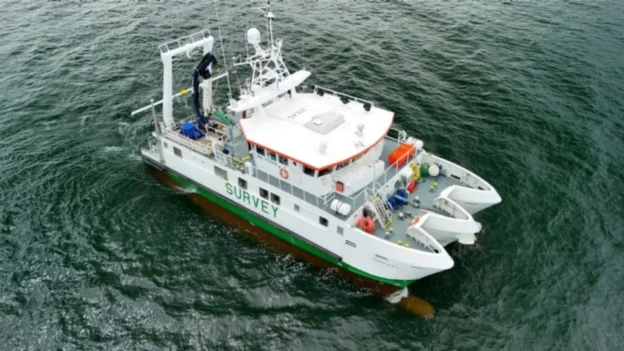Preliminary seabed studies were completed at the Baltic East site, where ORLEN Group plans to develop one of its future offshore wind farms in the Baltic Sea. offshore wind farms in the Baltic Sea.. The work included seismic, geotechnical and unexploded ordnance detection investigations, covering more than 1,000 kilometers of survey lines and depths of up to 80 meters below the seabed.
Polish consortium at the forefront of research in Baltic East
The research campaign was conducted by a 100% Polish consortium consisting of ORLEN Petrobaltic, Geofizyka Toruń and MEWO. This collaboration highlights the strengthening of the national supply chain for the
Geofizyka Toruń headed the seismic surveys with multichannel 2D technology to identify geological structures and assess potential subsurface hazards. MEWO undertook the unexploded ordnance (UXO) detection work, detecting dozens of magnetic anomalies that will now be evaluated to ensure the safety of future operations.
Deep drilling and geological modeling
ORLEN Petrobaltic completed more than 1,200 meters of geotechnical drilling on board the Sylur vessel. The samples obtained are being analyzed in the laboratory to precisely define the subsurface conditions. All this information will allow detailed geological modeling, the basis for the design of the park’s infrastructure.
The location Baltic East site already has subsea cabling permits, authorization for offshore structures and preliminary grid connection conditions. With a potential of close to 1 GW, the project will be able to power approximately 1.25 million homes. It is part of ORLEN’s strategic plan to reach 12.8 GW of renewable energy by 2035.
Baltic East is adjacent to Baltic Powerwhich will come into operation in 2026 with a capacity of 1.2 GW. Both represent a firm commitment by the ORLEN Group to diversify Poland’s electricity matrix by harnessing the offshore potential of the Baltic Sea.
Source and photo: ORLEN


